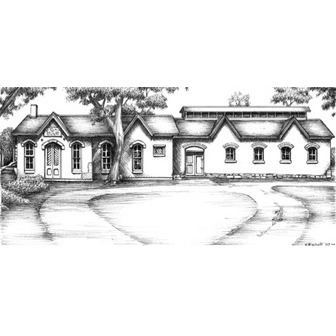Water Works





In 1880, the Fort Collins Board of Trustees began to deliberate about the town's need for a better water supply system. Water for household and commercial use was either delivered by the "water wagon" or dipped from a nearby irrigation canal. The threat of devastating fires loomed because most of the town's structures were wood frame construction.
Serious discussion about a water works arose after Jacob Welch's first dry goods store burned in February 1880. Several plans for water delivery systems were discussed, but when one of the proposals came to the voters, they rejected it. After another fire destroyed the new Keystone Block in September 1882, the town's voters finally agreed on a plan. Work began immediately.
The $77,000 project included construction of a canal that diverted water from the Cache la Poudre River above Laporte to a reservoir behind the pump house site. The Gothic-style pump house used sandstone from the Stout quarries and soft brick manufactured locally. It housed two American Water Wheel Company turbines and two Holly-Gaskill pumps to force water to Fort Collins through wrought iron pipes.
Completed in June 1883, tests of the system made headline news in the local newspapers. Initially, the townspeople were slow to sign up for water service because they were reluctant to commit to the additional expense. Many more households subscribed to the system by the 1890s, and the first ten years of its operation were deemed a success.
Then came outbreaks of disease, and complaints about water quality mounted. Even with the two new additions to the pump house building for a steam engine and a filtration system, the community outgrew its first water system by 1900. In 1905, a new water delivery system at the confluence of the Cache la Poudre River and the North Fork replaced the 1882-1883 Fort Collins Water Works.
The Poudre Landmarks Foundation and the Friends of the Water Works administers the ongoing preservation work at the water works property. Eventually, it will become an interpretive center for water development and use in the Fort Collins area. The State Historical Fund, a part of the Colorado Historical Society, provided several grants to complete planning, stabilization, and archaeological investigations at the property.
Explore Related Categories







